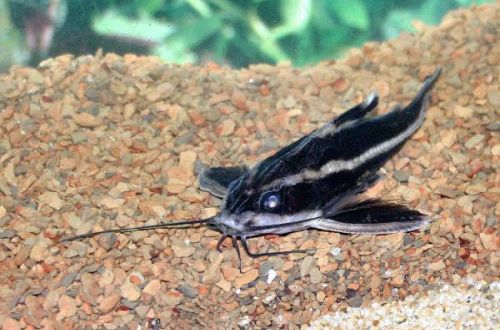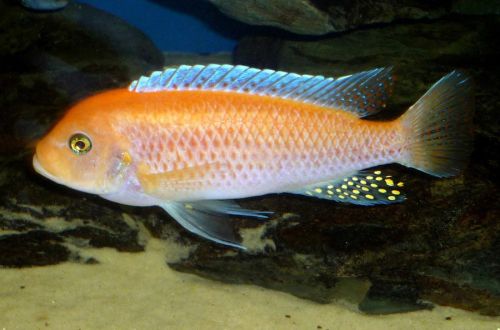
elephant fish
Gnathonemus petersii, Nile elephant fish or Elephant fish, scientific name Gnathonemus petersii, belongs to the Mormyridae family. The fish has a bizarre appearance, due to the structure of the oral apparatus, reminiscent of an elephant’s trunk. Which is what it owes its name to. This species needs special conditions of keeping and is not recommended for beginner aquarists.

Contents
Habitat
Comes from the African continent. Despite its name, the Nile Elephant lives not only in this river (and only in the upper reaches), but also in numerous rivers flowing in the equatorial and tropical zones. It lives in muddy waters in the bottom layer, prefers regions with a slow current and dense vegetation.
Brief information:
- The volume of the aquarium – from 250 liters.
- Temperature – 22-28°C
- Value pH — 6.0–7.5
- Water hardness – soft (5-15 dGH)
- Substrate type – soft, silty
- Lighting – subdued, dim
- Brackish water – no
- Water Movement – Low/Moderate
- The size of the fish is up to 22 cm.
- Food – any sinking food
- Temperament – peaceful
- Content alone with other species
Description
Adult individuals reach a length of about 22 cm. Sexual dimorphism is weakly expressed, it is problematic to distinguish a female from a female. A characteristic feature of this species is the presence of the so-called “trunk”. It is an elongated lower jaw, a kind of probe with which the fish finds food in the muddy substrate. The coloration is black with two white vertical stripes located between the dorsal and anal fins, which are shifted closer to the tail.
Gnathonem Peters is nocturnal, so it does not rely on sight to find food, but uses a special organ on the tail that produces short electrical impulses. On the head are electroreceptors that pick up the slightest distortion of the electric field, creating a picture of the terrain.
Food
Undemanding to the diet look. Will accept most dry, frozen and live foods. The main thing is that they are sinking, for example, bloodworms in combination with granules, flakes.
Maintenance and care, arrangement of the aquarium
The optimal size of the aquarium for one fish starts from 250 liters. Mandatory conditions for the successful maintenance of the Nile elephant fish are dim lighting and a soft substrate. The design also includes driftwood, smooth stones and plants that can grow in low light, such as Anubias, Vallisneria, mosses and ferns. Quality soil is critical. A rough substrate with sharp edges can damage the “trunk” and the fish will not be able to eat normally.
Stable water conditions are equally important. It is recommended to install a productive filtering system. It is worth remembering that fish do not respond well to excessive flow, so when choosing the type and model of the filter, preference should be given to those that do not create excessive water movement. Aquarium maintenance procedures are standard – this is a weekly replacement of part of the water with fresh water and regular cleaning of organic waste.
Behavior and Compatibility
Quiet but territorial view. Elephant fish should be kept separately from their relatives. A stronger individual can lead to the death of another. Compatible with other peaceful, but not too active fish. Anabasovye, Synodontis, Tetra-congo, Butterfly fish, African river cichlids will become good neighbors.
Breeding / breeding
Breeding is not feasible in home aquaria. Fish use electrical impulses, among other things, to identify each other. In an artificial environment, their sensitivity decreases and they cannot recognize representatives of the opposite sex, which serves as an additional barrier to spawning.
Fish diseases
The main reason for the occurrence of diseases is the conditions of detention. Poor water quality, poor nutrition and injury lead to various infections. In a balanced ecosystem, fish do not have health problems. Read more about symptoms and treatments in the Aquarium Fish Diseases section.





